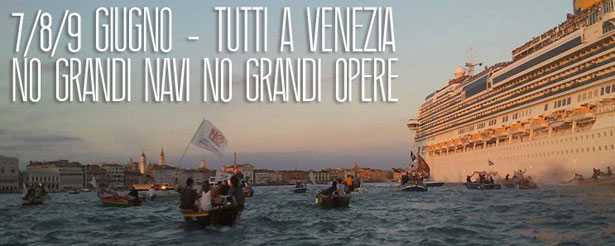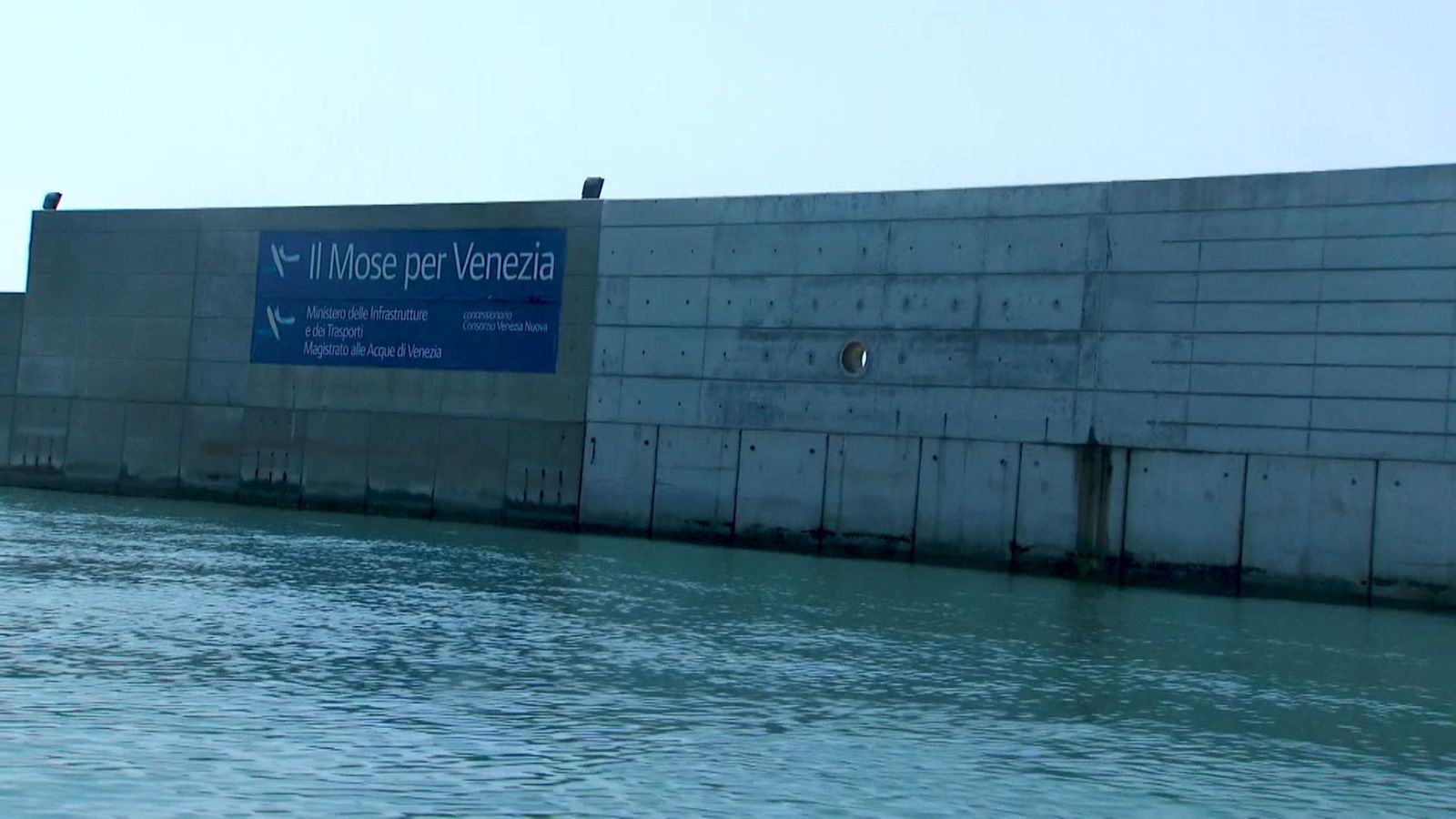Flying into Venice for a long-awaited vacation, the biggest thing we could see from the air was not the Piazza San Marco, or the Doge’s Palace, or the Basilica—the biggest thing in Venice was a cruise ship docked in the passenger port. In town an hour later, we saw the posters, which said (in Italian, of course), “Defend the City—Take Back the Lagoon—Days of International Struggle Against the Big Ships—June 7-8-9.” We had arrived just in time.
The problem was easy to see: the day of the big protest, MSC Divina was in port—it’s one of the ten biggest cruise ships in the world. It looks like a floating apartment building. It has eighteen decks, which makes it much taller than anything in Venice, where the tallest buildings are four or five stories high. It’s more than 1,000 feet long. Piazza San Marco, the largest public space in Venice, is less than 600 feet long. This ship carries 4,000 passengers and a crew of 1,300. When a ship like this sails through the canals of Venice on its way to Dubrovnik and the Greek Islands, it is, in the words of the protest organization No Grandi Navi, “an affront, an insult to the city and its way of life.”
The insults are coming more often. Cruise-ship tourism in Venice has increased fourfold in the last fifteen years, and the city is now the cruise capital of Europe. The organizing committee for the protest declared, “These mega cruise ships are a visible expression of a system of political and commercial wrongdoing that has been corrupting life, damaging the economy, the environment and, ultimately, the people of this region.” They called for “sustainable alternatives in business, industrial and economic planning, based on more participatory procedures, and a new season of democracy in defense of the common good.”
The committee also announced a contest for a new logo—and stated that “the prize for the winner will NOT be a cruise.”
“Everyone in Venice hates the cruise ships,” a young woman who worked for our hotel told us. But not quite everyone: the Cruise Venice Committee held a gala affair in October 2012, according to Barbie Nadeau of The Daily Beast, where 1,800 people gathered at the passenger terminal to celebrate the success of the city in attracting the big ships. According to the committee, more than 650 cruise ships now dock in Venice annually—two almost every day of the year—and they bring passengers who spend almost $200 million annually. Obviously, the people who run the restaurants and own the stores that sell the cheap carnival masks and little plastic gondolas have something to celebrate.
But “if the benefits of tourism are the death of a city, then tourism is not worth it,” says Silvio Testa, spokesman for the protest organization. “Cruise ships may not be entirely to blame, but they are a major component of a mechanism that is changing Venice like a gradual tide that erodes the substance of the city.”
During the three-day mobilization, demonstrators from out of town camped out on one of the nearby lagoon islands, where political discussions, debates and workshops were held during the first two days, with puppet shows for the children and music and partying at night—ska, Afrobeat and rock steady were listed on the program.
Sunday morning, the protest began with a blockade of the road from the parking lot to the passenger terminal. While demonstrators chanted “Don’t board that ship!”, police in riot gear attacked with clubs. News photos showed the protesters protecting themselves with inflatable plastic ducks and other children’s beach toys. The event was streamed live on the web by Global Project.
The climax of the three-day protest came Sunday afternoon in the water outside the cruise ship terminal: “Everyone in Boats in the Giudecca Canal!” While coast guard and police motorboats patrolled, hundreds of people in dozens of smaller boats filled the canal, flying flags that said “No Big Ships” alongside red medieval banners bearing a yellow lion of St. Mark—the historic flag of the 1,000-year-old Venetian Republic.
Manila Ricci, who blogged about the protest for Huffington Post Italia, called it “a day that expressed the collective power of people.” “Venice is free,” she wrote, “at least for today.” One of the leaders of the protest committee told me the protest was “una gesto simbolico”—“a symbolic gesture.” But for a tourist from Los Angeles, it was an eloquent and thrilling event.
 Comitato No grandi navi Comitato No grandi navi – Laguna bene comune
Comitato No grandi navi Comitato No grandi navi – Laguna bene comune




